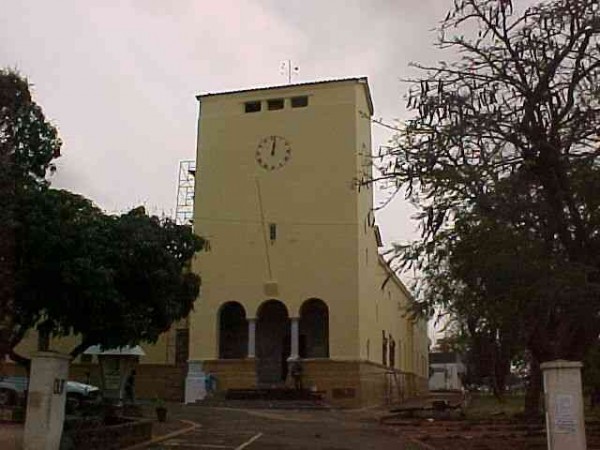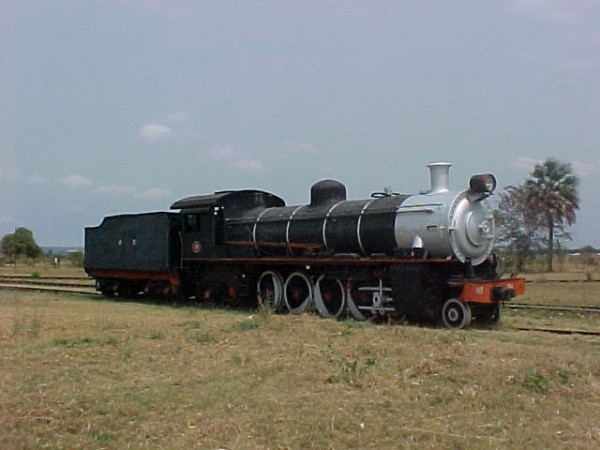Fact. If you buy these items anywhere else you’ll be paying too much! This is the bold claim that frequently graces the Game Stores weekly “specials” paper.
Though the claim looks like subjective opinion rather than fact, these are genuine reductions – up to 40 per cent on some items. The “specials”, agreed at Game Stores headquarters in South Africa, apply to stores throughout the chain in South Africa, Botswana and Namibia, and now Zambia, and are valid from Thursday through to Sunday The prices are overprinted on the “specials” catalogue in the local currency of each country.
These discounts are just one of the benefits for Game Stores customers. Many are happy that the company has brought an exciting variety of consumer goods to the Zambian capital, and many praise the company’s commitment to assisting the underprivileged by, for example, adopting orphanages. The K8 billion store employs over 60 permanent and 100 casual (weekend peak) Zambian workers, in an economy where jobs have been scarce in recent years.
On the other hand some aspects of the company’s operations have received a mixed reaction from some shoppers. They criticise the “pile ’em high, sell ’em cheap” marketing strategy as a means of extracting as much money as possible from Lusaka consumers and siphoning it into bank accounts overseas – not necessarily in South Africa. They criticise the overwhelming predominance of South African goods – probably inevitable since they supply standard items in bulk to their stores throughout southern Africa.
And the company’s pricing policy, intended to convey “a highly competitive image”, can be confusing when the catalogue contains inaccurate pricing, perhaps because of South African unfamiliarity with the Zambian currency, or Zambian demand is underestimated, so that an item such as computers is undersupplied and the stock sells out quickly, leaving some shoppers frustrated.
Senior citizens qualify for a card permitting a ten per cent discount on Wednesdays only. This discount applies to all stock, up to a value of K300,000 currently (a maximum discount of K30,000). But the poor pensioner may find that if he buys at 10 per cent discount on Wednesday, the same item is on sale at 20 per cent discount the following day. Again, frustrations. Should he take a gamble and hold off until tomorrow, or buy now and be sure of a bird in the hand?
But probably the most puzzling aspect of the pricing policy is the price guarantee. “We will beat the price of any other dealer who has stock of any item sold by Game.” A bold promise, but not so simple to implement. Quite early the company faced the problem of “grey imports”, notably electronic goods, smuggled in and sold at low prices that reflect the avoidance of the customs duty and VAT which the big retailers have to cope with. Store Manager Saga Moodley admits that he had to “take a loss” on some items because of this problem.
Nevertheless the customer does not always get the best out of this guarantee. Many shoppers are unaware of price differences from store to store, and even if they are, they may not bother to complain. Zambian shoppers don’t like to make a fuss, and some discrepancies may continue for a considerable time without raising comment.
The store’s reaction to complaints is varied. When the Customer Service Department was advised that the price of Bakers Tennis biscuits (200g), at K3,180, was well above Shoprite’s K2,400, the section supervisor was called over and alerted to the problem. But the shelf price remained unchanged until a month later when a letter to the manager resulted in a reduction to K2,380. Though Melisa’s price is still K2,400, Game now sells Tennis at K2,520, Shoprite at K2,600 and Woodburys at K2,500.
The duty manager, when advised that the shelf price of Liquifruit was shown as K3,860, prematurely and inaccurately responded that “that was a special promotional price”. On learning that the Shoprite and Melisa price was K3,600, he replied that if the customer wanted to buy immediately, he should wait until a checker had verified Shoprite’s price. This is not very practical, and the normal shopper’s reaction would not be to wait, but to buy at Shoprite or Melisa instead. A letter to the manager on this topic went unanswered, though again prices were quickly adjusted.
But there are other notable price discrepancies, mainly on food items and small domestic requirements, which are not Game Stores’ main lines. Provita biscuits in Game Stores sell for K8,060 (500g) and K5,120 (250g). In Melisa recently they cost K3,500 and K2,500, while Shoprite had only the 250g packs, at K3,200. The Game Stores price remains the same, Shoprite (250g) has risen to K3,500, but Provita was unavailable at Melisa on the latest check.
Oreo biscuits (200g) selling at K4,000 in Game Stores, were only K2,600 in Shoprite and K2,980 in Woodbury’s (Northmead). Vim 99 scourer (500g) was selling in Game at K2,720, but in Shoprite at K1,100 (Woodbury’s K1,350). Oreo and Vim 99 scourer were unavailable in Game Stores and Shoprite on the latest check, but were K2,950 and K1,350 respectively in Woodbury’s.
Enos Fruit Salts (orange, 100g) sell at K6,060 in Game, but only K3,600 in Shoprite. Timotei herbal conditioner (250g) was K9,460 in Game, but only K5,800 in Shoprite and K5,100 in Woodburys.
The Philips Toastissimo 4-slice toaster is K135,080 in Game, and K138,000 in the new Philips Manda Hill outlet, but Shoprite’s price is K105,000 which may be an aberration in view of their K100,000 price for the 2-slice model.
These discrepancies, among others, are often substantial. Over time, there is obviously some fluctuation in prices and availability.. However Game Stores clearly need to make comprehensive study visits to their competitors, followed by appropriate price adjustments, if they are to avoid giving the impression that they are relying on customer ignorance and lethargy in order to exploit their latest market in Zambia.
by David Simpson









